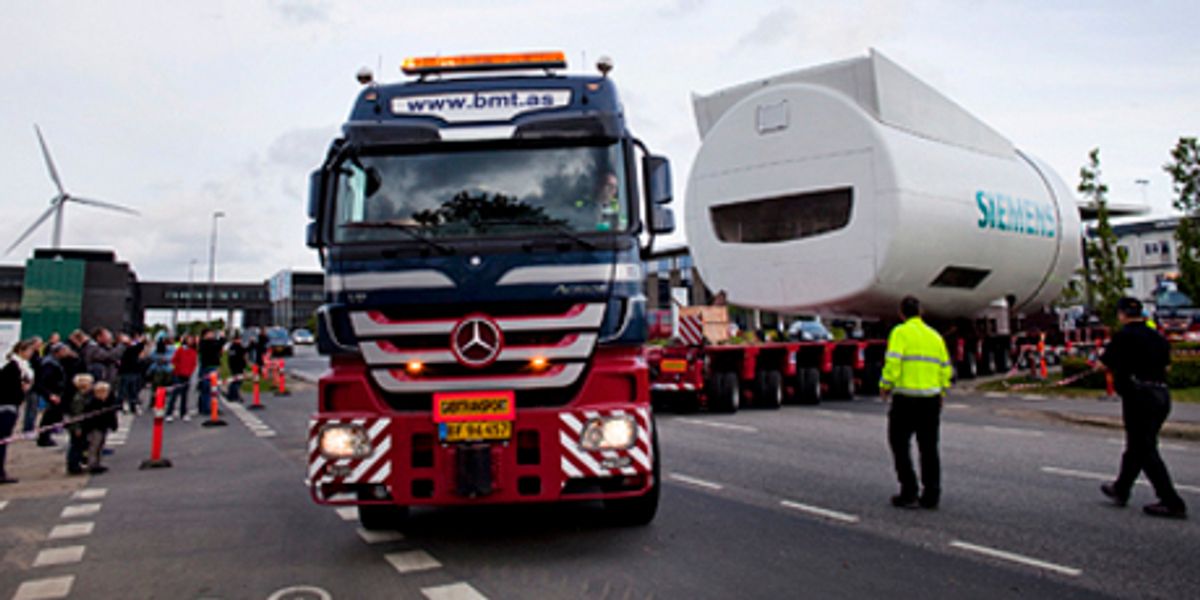Siemens has announced installation in the sea off Denmark of its prototype 6-megawatt wind turbine, which has a rotor diameter of 120 meters and yet weighs only 350 tons. The company boasts that the machine's relatively low weight is pathbreaking. "In tendency, large wind turbines have always been heavier per megawatt than small ones," comments Henrik Stiesdal, CTO of Siemens's wind power business unit. "Reaching this low weight with a strong and robust machine is the result of targeted innovation combined with our more than 30 years of wind industry experience."
Just in terms of electrical capacity, the new Siemens turbine is astonishing. Yet it is not the only such very large wind machine and is not in fact the current record setter. Three years ago, Enercon unveiled a 7-MW wind turbine, the E-126. The first of that series was installed on land, in Emden, Germany.
Given Germany's decision to phase out all nuclear energy on an accelerated basis, the bigger-than-ever wind turbines could not be arriving at a better time. As if in anticipation of the new situation, the German Ministry of Environment, Nature Protection, and Reactor Safety last September issued an "Immediate 10-Point Program" in connection with the government's general "energy concept."
Three of the first five points deal specifically with expediting construction of large wind farms in Germany's North and Baltic Seas. Several more are directly relevant to the viability of wind energy: new procedures to involve all stakeholders in grid planning, formulation of preconditions for a "coherent and Germany-wide grid expansion," a public information offensive to explain why building out the national power grid is essential to going green, financial breaks for energy storage systems, and so on.
In the context of the 10-point "immediate program," the government has authorized the quasipublic KfW Bank Group to make large concessional loans to bank consortia supporting large new wind projects and even to participate directly in such consortia. KfW may make loans of up to 400 million euros on a matching basis and still more, under certain conditions, if there are legitimate cost overruns. Taking that into account, total per-project KfW credit can go as high as 700 million euros (roughly US $1 billion).



